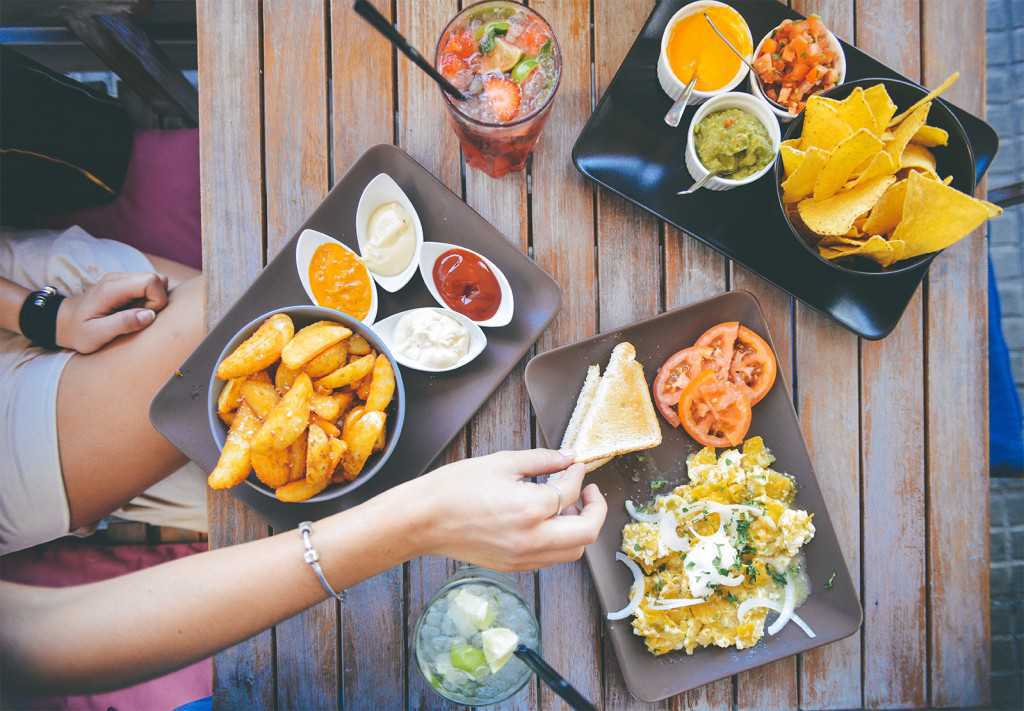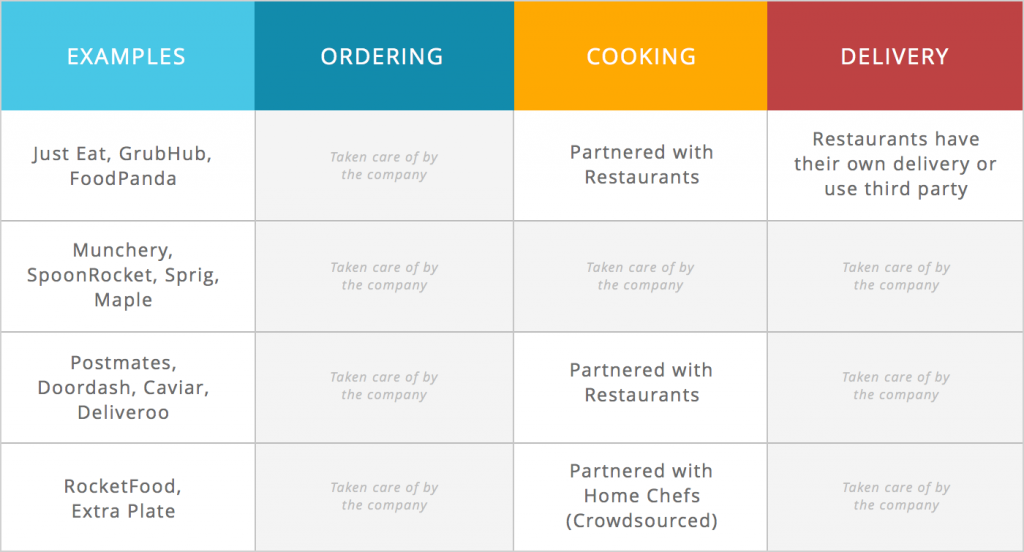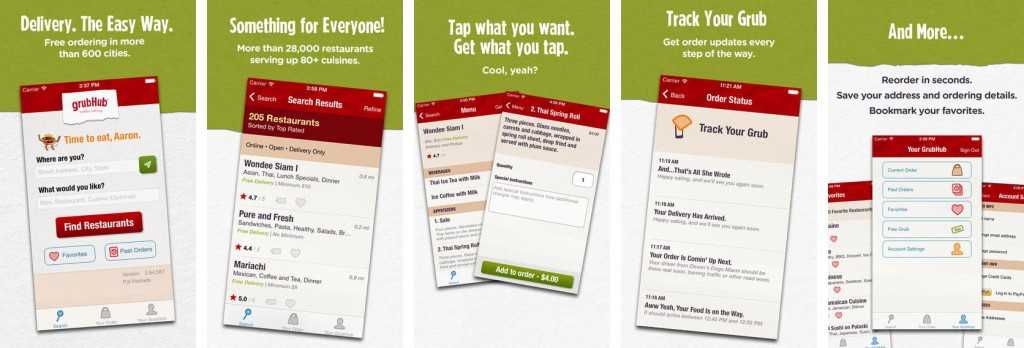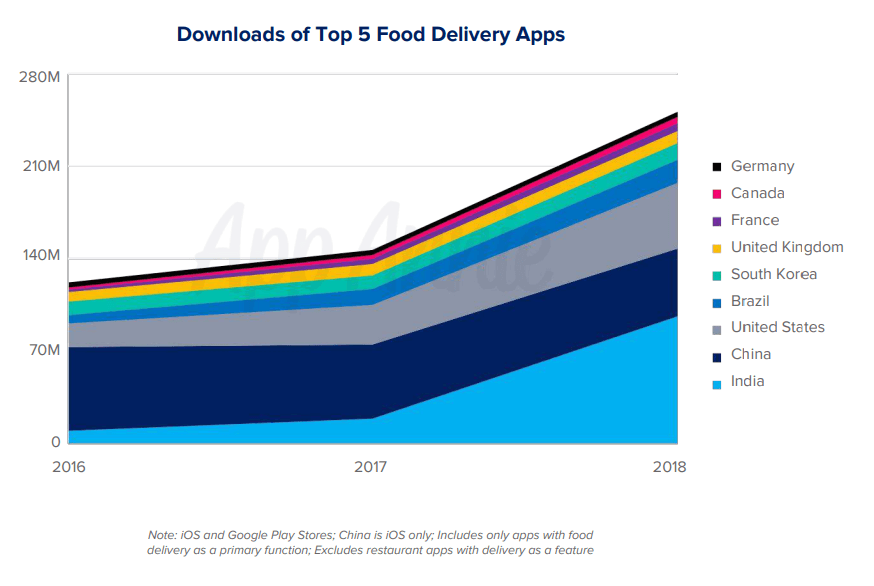
- Products
- Solutions
- Learn
- Partner
- Try Now

Food startups in the on-demand economy have a simple psychological appeal – they promise to buy us time and save us effort. They more than deliver convenience as a simple service attribute, they deliver convenience across every customer touch-point. Convenience research has identified five specific opportunities for convenience tech to buy people time and save them effort, namely:
- Decision Convenience – Making it fast and easy to choose. For eg. on Zomato and Swiggy, you can view ratings and reviews of restaurants, and decide where to order from.
- Access Convenience – Making it fast and easy to acquire. For eg. Hot Meals are delivered to you at your location within 15 minutes using SpoonRocket, making it easy to eat well wherever and whenever you are hungry.
- Transaction Convenience – Making it fast and easy to pay. For eg. All apps let you pay with cards, PayPal accounts or wallets like Apple Pay.
- Benefit Convenience – Making it fast and easy to enjoy/use. For eg. On Postmates, you can ask for delivery from more than one restaurant, and get it straight to your home.
- Post-Benefit Convenience – Making it fast and easy to re-purchase. For eg. You can save your address and payment details, bookmark your favourites to re-order in seconds.
The on-demand food industry has disrupted traditional markets by adopting a full-cycle approach to the three basic components of a meal experience at a restaurant: Ordering, Cooking and Delivering.
Ordering – Orders are customer requests to prepare and deliver food. All food on-demand businesses receive orders via an app, a website or phone. The orders could be for their own kitchen or another meal provider they have partnered with.
Cooking – Meals could be pre-cooked or cooked after an order is received, based on this Cooking time is estimated for the Food Delivery app.
Delivering – The transportation of Delivery is the backbone of any on-demand business. Businesses can have different Food delivery models depending on various factors.
The table below gives examples of various food on-demand companies and the business model they are built on, depending on which component out of the three is owned by them.

Based on the above table, there are 3 dominant business models prevalent today:
I. The Order Only Model
This model was used by the first generation of restaurant delivery services like JustEat, Grubhub etc. and focused on the first step: they act as a pure software layer that aggregates a fragmented offering of independent restaurants (mainly takeaways), which manage their own fleet of couriers.
These software-only marketplaces’ main selling point to restaurants is to bring a lot of new orders and replace their antiquated phone-ordering system with an optimised Web and mobile platform, that integrates with their kitchen workflow. To try an order only software click here, for free.
Order Allocation:
The technology used by such companies for receiving and communicating the order to the restaurant tends to work like this:
- Consumer places order on the website
- The restaurant receives the order by fax (preferred by many) or email.
- Restaurant notifies that order was received. There are several ways to do this. They can log in to the website, call an automated telephone system, respond to a call from an automated telephone system and so on.
- Companies might start sending orders into a web app or a native smartphone app.
- In some cases, these companies integrate into the restaurant’s POS system and print the order directly into the kitchen. This is rare.
Delivery:
It varies but most often it’s one of two scenarios.
- A delivery driver employed by the restaurant
- A delivery driver employed by a restaurant delivery service like Straight 2 your Door.

Limitations: Their reliance on the restaurants’ own couriers mean that they are somewhat limited in their offering of cuisines and price points: they have become mainly associated in consumers’ mind with relatively low-end takeaway food (pizza, burgers, Chinese, sushi etc.). It also means that they cannot control and optimize the speed and quality of the delivery.
Advantages: As they don’t touch the food itself (neither cooking nor delivering it), these platforms tend to charge a lowish fee of 10-15%. As any pure software business, they’re highly scalable and have all experienced remarkable growth.
To get a real feel of an Online Food ordering system, click here for free.
II. The Order and Delivery Model
The up and coming restaurant marketplaces (Doordash, Deliveroo), which developed in the previous two years, concentrate on step 1 and 3 of the procedure: they bring additional orders and requests to the eateries, manage the delivery for them, through their fleet of independent couriers connected by an Uber-like mobile app.
Order Allocation :
Ordering occurs at the app or website interface where the menu of a restaurant is uploaded. Sometimes, to help them pay the commission fee to the delivery service provider, the prices of items on the menu is marked up by the restaurants. The customers are also charged a flat fee for every restaurant where you place an order. When an order comes in, it is sent to the couriers closest to the pick-up location.
Delivery: When a courier is on duty, they are logged into their courier phone app which tracks their location. On receiving an order, couriers decide whether they can or cannot do the job. The first person to claim the job takes the job. If no one takes the job, it will be sent out to even more couriers who may be further out or be denied. Each delivery helps them gather data that allows them to keep optimizing routes and pick-up/drop-off patterns, giving them an enormous technological advantage.
Limitations: These are software and logistics companies and have a very significant amount of operational work to do (couriers’ hiring and training, equipment maintenance, shift planning, etc.). These on-demand marketplaces are therefore not as easy to scale as the pure-software one.
Advantages: They benefit from stronger barriers to entry and scale advantage: it will be very hard for a new entrant to compete against these optimized networks of restaurants and couriers, once they will have reached maturity in a city. They also charge a higher commission, 25-30% on average. Their prime feature is that they can offer a range of restaurants and price points that software-only marketplaces cannot.
Businesses built on this model employ people to deliver food from the chef’s homes to drop-off locations.
To try this model for free, CLICK-HERE!
III. The Fully Integrated Model
The third category of meal delivery startups, which includes Sprig, Maple and SpoonRocket has opted for full integration of the process: they developed their own app through which consumers can order a limited range of meals, reheated in their own fleet of cars as orders come in (or delivered chilled in a refrigerated truck as is the case with Munchery), and delivered as fast as possible or within a time window stipulated by the customer (as they save on the kitchen preparation time). They trade choice for convenience and a highly curated experience.
These on-demand businesses have hubs i.e kitchens that cater to the food orders of a particular area. There is usually a different menu every day. There are two ways in which hubs are servicing right now:
Scheduled Delivery
The kitchen opens to receive orders for a particular duration, primarily for delivery scheduled later in the day. People can start ordering after they get a message that the kitchen is open. They can then specify a delivery window in which they’d like to receive the food. Swiggy works on this model. It places its meals directly from its kitchen onto delivery trucks that get them to customers. However, it needs to plan very carefully for demand in order to avoid the waste that occurs if a meal is placed on a delivery truck but there isn’t enough demand, or more demand comes in than what a delivery truck serving a specific area has available. By allowing its customers to place pre-orders, it can predict demand accurately, manage supply accordingly, optimize delivery schedules, and reduce waste. They even have an order-on-the-go option for dinner.
Instant Delivery
The kitchen opens to receive orders after preparing meals. As orders are received for ready meals, delivery can be done almost instantly within a specified time. SpoonRocket works on this model. Packed meals are delivered within 15 minutes and are actually kept in heaters that are driven around in SpoonRocket-owned vehicles, making sure they’re delivered hot and fast to people who order them. You can read our interview with Spoon Rocket’s co-founders, Anson Tsui and Steven Hsiao.
Allocation: The decision to allocate a particular order to a driver can happen in two ways:
Automatically – zero admin involvement (assuming drivers have all meals available with them at all times)
- The order is automatically allocated to the nearest driver
- The order is automatically allocated to the driver in whose zone the customer lies
Manual – some admin involvement
- The order is routed through the admin to the driver closest to the customer
- The order is routed through the admin to the driver who has the packed meals requested for by the customer. This happens in case a driver rejects a request due to the non-availability of a meal.
Delivery: Delivery is through drivers employed by the company. Each driver is given a set number of packed meals and order requests are routed to each driver automatically/manually by the admin. Based on the following factors, a driver chooses where to deliver first :
- First Come, First Serve: Preference will go to the customers who ordered first.
- Location-Based: Customer nearest to the driver will be serviced first.
If you wish to know more how much will it cost to build a food ordering app or a food clone app like Ubereats or Zomato, we recommend you to read this interesting article. If you’re aiming to build the next disruptive on-demand food startup, get in touch with us! We can help you with our formidable technology expertise in the area.

Subscribe to stay ahead with the latest updates and entrepreneurial insights!

Subscribe to our newsletter
Get access to the latest industry & product insights.





















